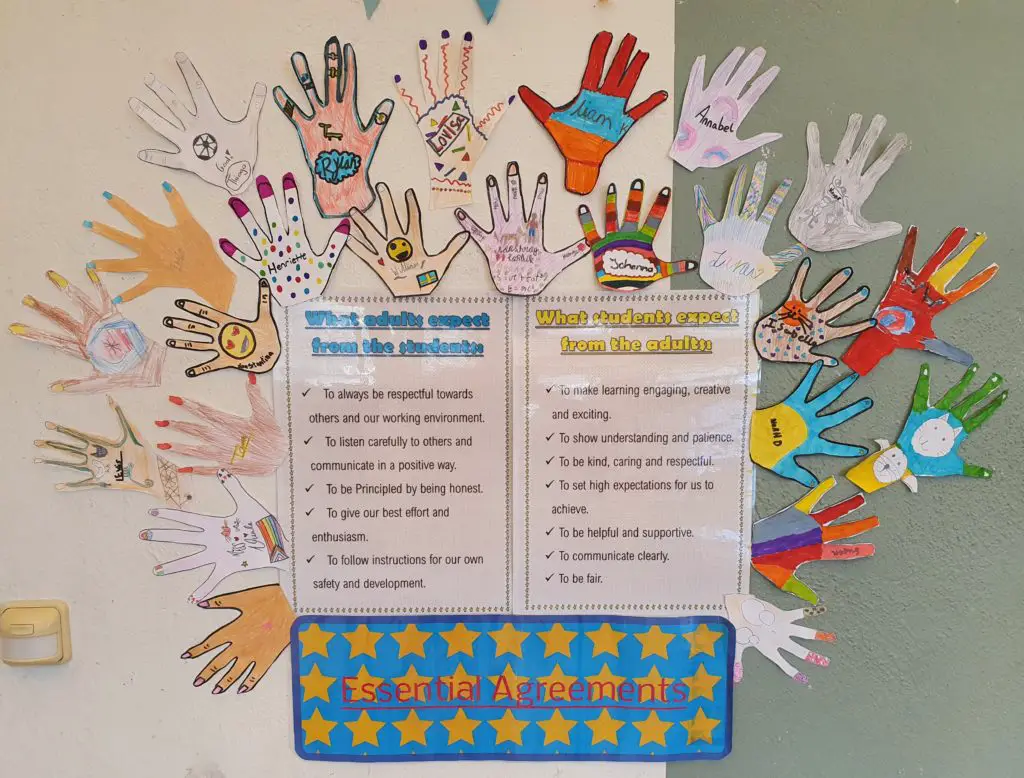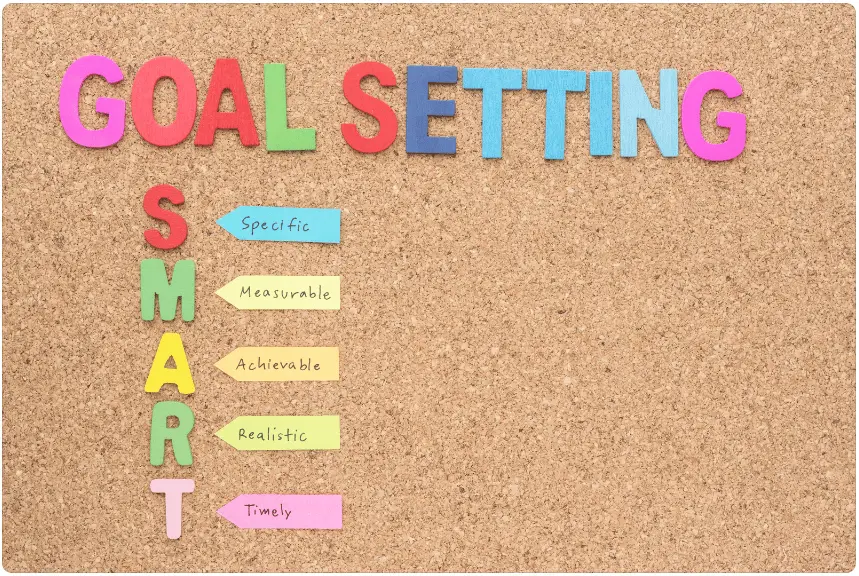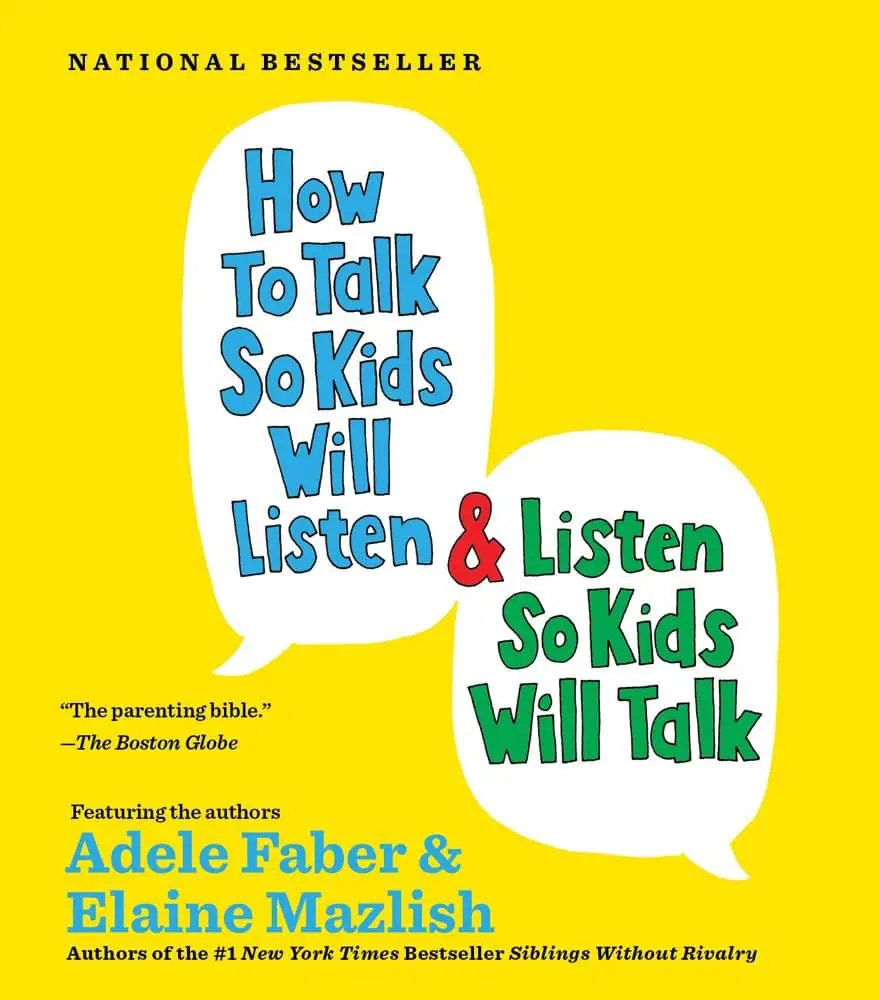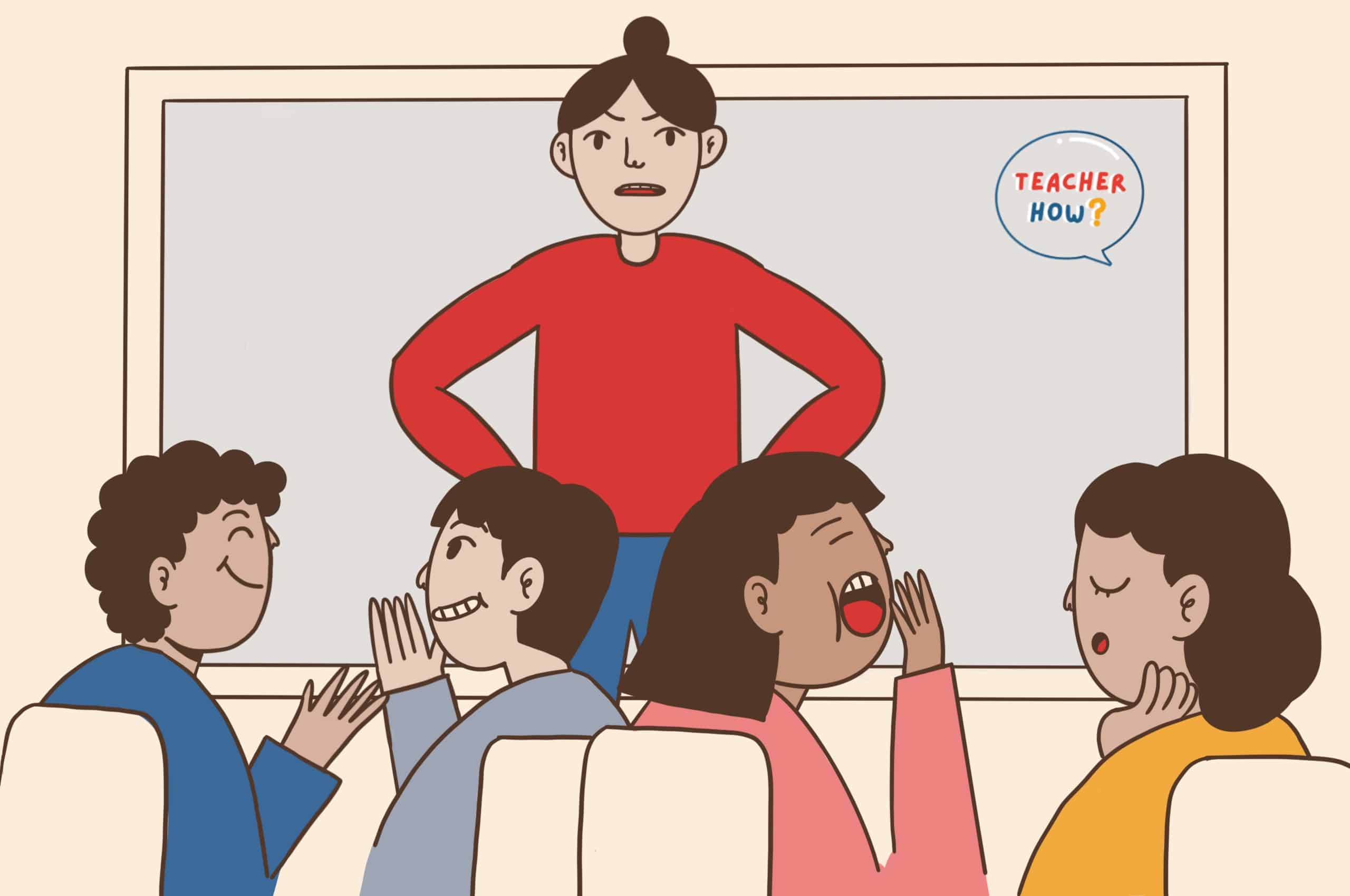How frustrating is it when you are explaining something to someone, but blatantly they are not listening? Welcome to the life of most teachers, who often see their words fall on deaf ears as they deliver information to their students.
It can be tempting to blame students’ poor listening skills on external factors, but it’s essential to consider all possible reasons and perspectives when the problem arises.
Here are 10 reasons why your students don’t listen to you:
- It’s a habit.
- They want control over the situation.
- You skipped the basics.
- The lesson is not engaging.
- Lack of motivation.
- Lack of an enabling environment.
- They don’t feel appreciated.
- Lack of follow-through.
- They feel uncertain.
- Lack of connection.
The rest of this article will describe the possible reasons mentioned above why your students are not listening to you. In addition, I’ll go over tips on how to rectify each likely cause.
1. It’s a Habit
Sometimes students get into unwanted habits, like not listening to their teacher. If failure to listen becomes routine in your classroom, tuning you out can quickly become a habit. Frankly, this comes back to the teacher as an instructor and their classroom management style.
One possibility is if you allow talking during instructional periods. Meaning that if you permit it once, you are permitting it from then on. Children will consistently test boundaries, and if your limits are minimal or frail, students will take advantage of this.

Letting things slide while teaching is easier than addressing the problem. I have observed lessons where students played music on their phones at full volume, and the teacher continued to deliver the lesson as if this was common practice.
What You Can Do To Fix This
The only way to break a bad habit is to replace it with a good one. This may sound simple, but it requires time and effort. You’d expect some pushback from your students, as well. If you’ve allowed them to cultivate a habit of disregarding you for quite some time, then you can’t expect a change to the norm overnight.
I suggest adopting new habits that teach them to respond and listen to you. For example, if they are continuously talking over you, stop what you are doing and just wait until they are silent. Once they quit talking, you can then resume teaching.
If this recommendation is not so constructive, there are plenty of other strategies you can implement. Read the article “15 effective ways to quiet a class without yelling” for more suggestions.
2. They Want Control Over the Situation
Some children realize early on that they can efficiently regulate their words and behavior. They can then control and manipulate a situation with what they say or do. This is enormously empowering for a child.
One way students can exert control is by not listening in class. They feel like they’re in charge of the situation if they can restrict you from delivering your lesson.
The student feels a sense of achievement and pride, especially if their peers are watching. Interrupting the lesson or getting a reaction out of you indicates that the balance of power has shifted in the student’s favor.
Children may exhibit this kind of behavior to get their emotional, physical, and psychological needs met. It can also be a cry for help. For instance, the student may be shouldering a substantial trauma, and appearing to be in control might be their attempt at masking the suffering.
What You Can Do To Fix This
If you’re in a power struggle with your students and, as a result, they aren’t listening to you; I would suggest you try talking to the students. Truly listen to what they claim to be the issue, be it in class or with you. Note that it’s essential to validate their feelings.

Open and honest communication is the cornerstone of a healthy relationship, and this applies to the positive relationships you ought to be building with your students. If they start to argue with you, don’t interrupt them. Instead, listen and validate them by saying, (once they are done quarreling), “I understand your perspective…” or, “I see what you’re saying….” Letting students have a voice can significantly diffuse a tense situation and end a power struggle.
Acting calm and unfazed will also show the student that they can’t get under your skin. Not scooping to the student’s level will give everyone watching confidence in your ability to lead.
Finally, if it’s control that the student is after, give it to them – but on your terms! Assign them additional responsibility to redirect their focus into something productive.
For example, ask them to lead a Q&A session related to what the class has been learning. They can even be a scribe, writing notes on the board as you teach. The key is to offer them the satisfaction of being in control while you are, in fact, the main one in charge – as should be.
I have outlined a few suggestions to address any signs of controlling behavior. Try and monitor each one to assess their effectiveness.
3. You Skipped the Basics
Sometimes students don’t listen in class because they weren’t taught how to early on.
During the initial fall semester, or whenever you begin teaching a new group of students, it’s critical to spend at least the first month explaining and reinforcing the key expectations. This includes how you expect them to listen and engage in the material during class time.
Regardless of grade group, the teacher should always dedicate time to reviewing these rules. Even high school teachers, who might think that their students ought to already know the basics by now, should never underestimate the clarification of expectations.
What You Can Do To Fix This
If you skip the basics at the beginning of the year, it can be challenging to go back to them later down the line. How they start conducting themselves from the onset quickly turns into habits. And the longer you leave things, the harder it becomes to change those habits.
If you are reading this earlier in the academic year, you are at an advantage. You can dedicate some time to going through clearly what your expectations are if you haven’t already done so.
Turn it into a conversation rather than a lecture. Instead of dictating everything you want them to do, ask them what they think the classroom expectations should be.
An open discussion with your students, where they are sharing their thoughts and ideas also, can be tremendously meaningful. At the end of these discussions, make sure that you and the students arrive at a clear understanding of the expectations.
If some time has passed since the start of the year and you missed the basics, all is not lost, but you will have to take more urgent steps.
One way to do this is by rearranging your classroom and designing a seating plan. Split up friendly students and place the desks in single-file rows.
I like to place my student’s desks facing the front of the room or whiteboard and position my desk behind all the other students’ desks. This way, I can see their backs and screens (if they are using devices) whenever I look up.
Room arrangements can help you regain control, while a new design helps signal to the students that change was necessary due to their previous conduct. And, of course, get round to spending time going through your basic expectations and communicating them clearly to your students.
Another recommendation is to have a classroom display board showing the expectations in clear view. You can make this as creative and decorative as you choose and even get the students involved in making it. Below is an example of the “essential agreements” we created in class, but there are many other excellent ideas out there, so be sure to search online.

4. The Lesson is Not Engaging
Have you ever switched off during a meeting and stopped listening to the speaker? If so, most likely it was because the presentation or what the speaker was saying was not engaging enough. We must humbly accept that our students probably experience the same thing regarding the level of engagement we create in our lessons.
If a student finds a lesson boring or irrelevant, no doubt they will struggle to pay attention in class. What’s worse, they may find other means to occupy their time and distract the rest of their peers from concentrating.
It’s unfair to direct your frustrations toward students if the lesson is not engaging enough. Instead, think about how you like to learn and what makes you want to listen to others when they talk.
Presenting your information, learning materials, and instruction effectively is critical. Finding new ways to make your lessons engaging not only impacts the teaching and learning in class but can also be fun for you.
What You Can Do To Fix This
Simply put, you have to make your lessons more engaging.
Although every student differs from their peers and tends to learn differently, a teacher can often gauge how enjoyable a lesson is. If you are unsure, simply ask your students for feedback. Here are some suggestions to get you started:
- Teaching through play: Introducing educational games will capture the imagination – and attention – of all your students. Depending on the game, the students can participate using their hands, bodies, pencils and papers, or voices, just as long as they are focused and listening.
- Hands-on activities: Learning through practical, hands-on activities is an excellent way to keep students engaged. For example, if you’re doing a lesson on flowers, you can collect some and give each student a chance to examine them at their tables.
- Group work: Working with classmates often beats having to listen to the teacher for a lengthy period of time. Adding opportunities for group work can break up a lesson in your favor, so when it’s time for them to listen to you, they should be more attentive now that they have had the opportunity to talk and collaborate.

In addition, many resources online can help lesson engagement, both free and for a relatively small fee. If you haven’t heard of Teachers Pay Teachers, consider this your cue to get an account. Look for your grade level and subject materials.
Teachers Pay Teachers is a way for educators to share fun and engaging lessons. Many creators often feature lesson templates and tips on presenting the material. If you’re looking for free stuff, check out Education.com and Jumpstart.com for fresh ideas and lesson resources.
Once you identify the style, methods, and projects your students like, incorporate them more into your teaching.
There are some specific ways of learning that my students adore, so I try to utilize them as much as possible. For example, scavenger hunt activities are a firm favorite. Hide questions around the playground or school where students must locate them before answering. The idea is simple and works with any subject.
Making lessons engaging takes commitment, creativity, time, and an open mind. It requires some extra work on your part, but the results are highly rewarding.
5. Lack of Motivation
I’ve seen plenty of examples of teachers going above and beyond, but their students still don’t listen. They would cover expectations clearly and ensure that the lessons are well presented and engaging, but still can’t get their students to pay attention. Unsurprisingly, this can be demoralizing and impact the teacher’s drive.
Just as we as adults can experience waves of discouragement, students are the same. Their level of motivation can fluctuate irrespective of the teacher or the lesson.
A common reason students may feel demotivated is due to a lack of ambition. If they haven’t set themselves any goals, they won’t have anything to work towards. Essentially, they are just present in class without a sense of purpose.
You might describe the student as unfazed, apathetic, and sometimes even lazy as you witness your words go into one ear and out of the other. Luckily, there are things you can do so don’t lose hope.
What You Can Do To Fix This
Checking in with students and having open and honest conversations is a good start. They may not like the course material, or they may be struggling with issues outside the classroom. If students feel like you genuinely care about them, it can make them feel motivated.
Incentives are also a highly effective way of influencing motivation. Praising students who are meeting expectations will encourage them to continue on the right path. But this positive reinforcement will also inspire the ones who struggle to listen to be more reflective about their actions.
Verbal feedback is not the only incentive that can be used. Naturally, children respond well to physical rewards like prizes and treats. Students will need to work hard to earn such rewards, which could be a good source of motivation.
And finally, working together to set targets and goals for the student will give them a sense of purpose and something to work towards. Targets should be achievable and monitored over time.

I place great importance on reflecting on what we do, so as we come to the end of a topic or term, I provide opportunities for us to reflect as a class. We look back on our strengths and highlights, but also decide on what we can work on. With some guidance from me, my students would set personal and academic targets to achieve over a few weeks or months.
If a student is not listening to you, don’t overlook their level of motivation as a contributing factor. Start by speaking to them about it, and then introduce incentives and targets to help improve their motivation.
6. Lack of an Enabling Environment
Sometimes students don’t listen because their surroundings are distracting. Have you put thought into setting up an environment conducive to focused learning? This entails where each student is seated in the classroom, who they are seated close to, and what’s around them.
A classroom is filled with colorful displays, interactive resources, and a vast array of information floating around. Add 20-30 other students into the mix, and there’s no wonder a student might struggle to give their undivided attention to the teacher.
It’s not just the temptation to talk with friends that might be a distraction. The items found around a student can also consume their attention. Things like stationery, resources, and furniture can be tempting to touch and explore instead of listening to the teacher.
Movements and sounds from outside are also a real test for easily distracted students. If a classroom has windows or is not very good at keeping out external noise, the attention of some students will often be diverted to what is happening outside.
Additionally, it may seem obvious but still worth mentioning that it’s crucial for students to feel safe in their environment. They likely won’t be interested in listening or learning if they don’t.
What You Can Do To Fix This
The key is to minimize distractions as much as possible, especially for students who find it harder to concentrate. Again, desk arrangement is vital for an easier-to-focus learning environment.
Separate the chattier students so they are not sitting near a close friend. For students you need to keep an extra close eye on, have them seated closer to the teacher’s desk.

Similarly, position the furniture where the focal point is your teaching board. This involves having the tables and chairs facing the way you choose, so the students look in your direction by default.
As you can see, there are simple changes you can make to minimize distractions so that students have fewer excuses to not be listening.
The other part of creating an enabling environment is how safe students feel in class.
Student Treasures suggests that teachers hold regular class meetings to check in with all students and encourage constructive self-expression. Regular meetings can also help promote positive peer interaction and give them healthy avenues for expression.
One thing I did in my classroom was establish student-led discussions. I did this in the form of Socratic Seminars. I would present a discussion topic, allow the students adequate time to prepare for it, and then let them talk without my involvement.
This allowed me to learn much about my students and let them find their voice as leaders. See a Socratic Seminar in action in the video below:
Some other things to include in your classroom are motivating quotes for inspiration and plants to make the place a little more homely.
7. They Don’t Feel Appreciated
Have you ever been in an interaction where you didn’t feel appreciated? Were you more or less likely to listen to the individual that made you feel that way? Almost certainly, less.
Children are no different. They want the same things that adults need, and one of those things is feeling valued.

On Maslow’s hierarchy of needs, feeling appreciated falls under esteem. Students need to know that what they do makes a difference. This includes the work they produce and how carefully they listen to instructions.
If they are not made to feel valued, how can we expect them to have confidence and trust in what we say? And often, teachers interpret a student’s lack of self-esteem as impolite, lazy behavior without understanding the truth.
What You Can Do To Fix This
If a student displays an unruly attitude, approach the situation with the desire to understand rather than be understood.
My first advice would be to show more recognition to students, even for the smallest things. If a student is lining up sensibly, draw attention to it. If a student completes an assignment well, show your joy. If a student is interacting positively with others, announce it.
Your acknowledgment can be significantly impactful in boosting their self-worth.
Another way to make students feel appreciated is by giving them a voice and letting them be heard.
There are plenty of books on this subject that can be great resources. I like the book “How to Talk, so Kids Will Listen and How to Listen so Kids Will Talk” (available on Amazon.com), which offers invaluable insights on how to communicate with your children.

Communication is a two-way street. Consider whether or not you’ve allowed your students to have a voice in the conversation or if you’ve been talking at them.
Ultimately, when kids feel appreciated, they’re more likely to listen.
8. Lack of Follow-Through
Behavior management is a big part of a teacher’s role. If you set consequences to tackling unacceptable conduct, then you must follow through on said consequences.
Let me illustrate. Let’s say Johnny and Susie are talking while you’re teaching, and you warn them that if they continue, they will have to forgo a portion of their recess as a punishment. If Johnny and Susie do indeed continue, but you don’t take away any of their recess time as promised, how are these two students meant to take you seriously? Worse still, how can you expect anyone in your class to believe what you say?
Children need boundaries for their best interests. And when they resist and test these boundaries, we need to be firm and decisive if we know it is for their own good.
Sometimes it can be easier and less hassle for a teacher to “let this one slide.” You might think that you are doing the student a favor, but in reality, you are sending the wrong message to the child and making things even harder for yourself later down the line.
What You Can Do To Fix This
I mentioned earlier in the article that you need to explain the basic expectations to your students from the very start. With this, you should also set out the proportionate consequences of not meeting the expectations.
It’s crucial to maintain consistency when being firm and disciplining your students. You should treat each student equally and keep the classroom rules consistent. This way, you’ll avoid confusion and confrontation.
For example, you may have a system where if students are constantly disrupting the lesson, they stay inside for the first five minutes of recess. If you’re looking for other – and more effective – examples of consequences, be sure to read “10 alternatives to taking away recess as punishment.”

Whichever system you put in place, you can’t warn students about it and not implement it. If that’s the rule that you’ve set, then that’s the rule you should stick by. If students see you following through on a consequence, they’ll try harder to stay out of trouble.
9. They Feel Uncertain
Sometimes students are genuinely uncertain and, therefore, not confident about the content you’re teaching or instructing on.
In this case, my fellow teachers might think, “well, that’s exactly why they should listen!” And while it would be easy to agree with this sentiment, it’s not that straightforward.
If somebody doesn’t feel confident about a topic or task, their mind will start to drift onto other thoughts. Often these thoughts would be negative, pessimistic thoughts. Consequently, paying attention to the task at hand becomes a lot trickier.
Especially for young children, uncertainty can leave them feeling fearful and anxious. They might not even want to attend class, let alone be able to focus on the material you’re presenting.
Often the teacher is unaware of the situation or the student’s distress. To them, it just looks like the student is being disrespectful by not listening.
What You Can Do To Fix This
The problem might not be apparent while you are teaching. Therefore, use the students’ work and test results as indicators of how confident they are feeling. If a student is performing below average or below their usual standard, that is a sign for you to keep a close eye on that student’s behavior during class.
Once you suspect a correlation between a student’s level of engagement and their lack of certainty, interventions need to be implemented. For instance, work with the child in a smaller group setting. That way, they would feel less intimidated to ask for help as you provide more targeted support.

Another form of intervention that can help pupils is differentiated teaching. This involves adjusting the content being taught or the outcome expected. Sounds easy, but differentiation is such a deep and dynamic concept. I’ve been involved in countless training sessions over the years, and I’m still frequently picking up new evidence about differentiation.
Luckily, plenty of practical suggestions available online would help you provide the best support for your students. I would recommend this article on Prodigy, where they offer 20 strategies for differentiated instruction.
10. Lack of Connection
Your students are not listening because they may not feel connected to the subject, class, or teacher. A lack of connection can make students want to distance themselves from the situation, and one way they can do that is by not listening.
Let’s talk about each one separately. A lack of connection to the subject means the student cannot relate to what is being taught. For example, reading books about the ancient Greek civilization is unlikely to excite many young students in America. How can they relate to a group of people that lived many centuries ago on a distant continent? I’m not implying that ancient Greek history should never be taught. But that if you are teaching something, find a way to make it relevant to your students!

The next one involves a connection to the class. Ultimately, these students may not feel completely welcome in class. They might be experiencing bullying or feel marginalized by the other students. Or worse, they might be made to feel excluded by the teacher.
This overlaps with the last point – some students lack a connection with the teacher. It is heartbreaking to see an adverse student-teacher relationship. I like to think that as teachers, we came into the profession to have a positive impact on young people’s lives. Not to alienate them.
A breakdown in the relationship is not healthy for either party. Conscious steps should be taken; again, the onus falls on the teacher to ensure that all students develop that attachment.
What You Can Do To Fix This
If the student doesn’t feel connected to the subject, endeavor to make your teaching more personalized and relevant. For instance, instead of assigning generic math problems commonly found in textbooks, I would create new ones that feature my students’ names and light-hearted facts. Immediately, a boring math task becomes more appealing because the students can relate to seeing themselves included in the question.
Connecting their interests to writing activities is another excellent example of making lessons relevant. The teacher will still set out the learning objective and deliver the lesson as usual. But when it comes to the assignment, let them apply the learning to something that excites them.
If a student has a favorite sports team, let them write about that. If a student is enthusiastic about an upcoming trip, let them mention it in their work. As the teacher, you are still assessing their writing skills, so why not give them ownership of how they demonstrate those skills?
When students don’t share an attachment to the class or the teacher, we can’t expect them to listen and be active members.
Creating a safe and positive learning environment is paramount for the development and well-being of everyone in the class. To achieve this, here are some points to keep in mind:
- Everyone must communicate respectfully and encouragingly.
- Have zero tolerance for demeaning behavior.
- Understand different backgrounds and views.
- Celebrate achievements.
Building connections is something teachers need to emphasize at the beginning of the school year and then reiterate throughout the rest of the term.
Another resource I’d suggest is “Capturing Minds by Capturing Hearts” (available on Amazon.com). The premise of this idea is that if you develop a positive relationship with students, they’re more likely to listen to you and be engaged in your teaching material.

Try implementing some of the fundamentals of capturing students’ hearts by standing outside your classroom before students come in and genuinely greeting them. Offer a handshake, a high-five, or a hug – let kids decide how they want to welcome you, but always be there with a smile and a hello.
Final Thoughts
A student not listening in class can be immensely frustrating for a teacher. But understanding the possible reasons why the student is disengaged puts you in a better position to address the problem.
In summary, set out your expectations from the start, create engaging and relevant content, and most importantly, build positive connections so that your students feel appreciated and motivated.
Sources
- The Pathway to Success: 13 Ways to Avoid Power Struggles
- Student Treasures: How to Create a Positive Learning Environment for the Upcoming School Year
- Read Write Think: Socratic Seminars
- YouTube: AVID Socratic Seminar
- Teach Thought: 20 Ways to Improve Student Follow-Through
- Teachers Pay Teachers: Teaching Resources and Lesson Plans
- Amazon: Capturing Minds by Capturing Hearts: 40 Ways in 40 Days
- Amazon: How to Talk so Kids Will Listen and Listen so Kids Will Talk
- The Child Psychology Service: Controlling Behaviour
- Prodigy: 20 Differentiated Instruction Strategies and Examples

